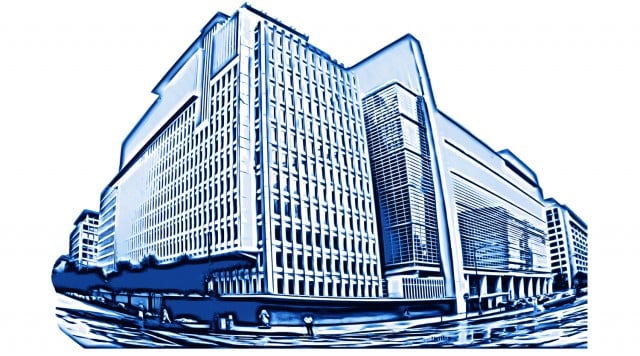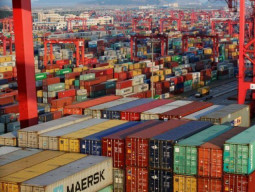
So how did Brazil transform from a Latin American basket-case to the global economic powerhouse that it is today? In part, it was due to the fact that despite the election of the left-leaning Lula Inácio Lula da Silva as president in 2002, the government of Brazil stuck to policies consistent with the previous administration’s agreements with the IMF. In doing so, they were able to repay the IMF’s loan two years ahead of schedule.
The consistency of policy obviously helped the Brazilian economy. But what also helped was the more limited role taken on by the Brazilian government, in accordance with the list of policy prescriptions given by the IMF, broadly referred to as the Washington Consensus.
Briefly put, it is a list of ten policy recommendations that have sometimes been characterised as the product of neo-liberal institutionalism. The policy framework calls for fiscal discipline, trade liberalisation, privatisation of state enterprises and the removal of cumbersome regulation that inhibits free enterprise. In particular, it advocates redirecting government spending away from subsidies and more towards infrastructure development.
As may be evident from the above description, there are several reasons why these recommendations would be unpopular, particularly amongst left-leaning politicians in developing countries. It is politically popular to use government money to reduce the price of bread, even if it means that the government will then run a deficit that will cause inflation that then result in higher prices of bread in the first place. Most people cannot see the link between profligate government spending and inflation, but they can see the government providing them cheaper food.
The gist of the IMF’s recommendations, followed closely, will be to the benefit of Pakistan.
Fiscal discipline and tight monetary policy
While there may be a legitimate case for governments to run deficits for short periods of time, the principle is almost unarguable: the government should not spend more than it takes in as revenues over the long run.
There have been many economists who have bristled at the IMF’s insistence that the government of Pakistan not engage in any fiscal stimulus policy to help grow the economy, particularly at a time when economies around the world are doing just that to avert a recession.
What they perhaps discount is the fact that even in most developed economies, fiscal stimulus is a dicey proposition that relies upon the government knowing exactly where to target its spending. In essence, the government then decides who wins and who loses in the economy. How many people think that the government of Pakistan – indeed any government – is capable of doing so in a fair, unbiased, uncorrupted manner?
The fact remains that one of the largest causes of inflation in Pakistan is government borrowing from the central bank, which increases the money supply and causes prices across the board to go up. This then increases the cost of borrowing, which in turn slows down investment and growth in the economy. Maintaining fiscal discipline in the face of a crisis may be hard, but it is also the right thing to do over the long run
Privatisation and deregulation
The benefit of privatisation is simple enough to understand. Instead of being a government bureaucracy that is subject to political influence, a company becomes an organisation whose first motive is to be financially self-sustaining.
During the 1990s, most government banks ran heavy losses and required almost constant injections of capital from the government in order to stay solvent. In the early part of this century, the government began privatising them. Far from making losses, the banks now pay in billions in tax revenue to the government. For example, between 1997 and 2000, Habib Bank Ltd cost the government Rs14 billion in losses. The bank has paid more than that amount over the last two years in just income taxes, a period that included one of the most severe financial crises in the country’s history.
Examples of reducing the government’s role in the economy abound. Finance Minister Hafeez Shaikh recently cited the example of the telecommunications industry, where the government privatised and then deregulated the sector leading more Pakistanis than ever before to have access to telecoms services at some of the cheapest rates in the world.
From an ideological standpoint, those of us on the economic right believe that the government is better off simply regulating and promoting private free enterprise, rather than trying to intervene on its own. The results, even from Pakistan, speak for themselves.
Subsidies vs infrastructure
This is perhaps the most contentious of the IMF recommendations: reducing the share of subsidies in the development budget in favour of infrastructure spending. However, the logic behind this recommendation is also simple enough: subsidies do nothing to help people improve the quality of their lives and keeps them perennially dependent on the government for support. Infrastructure development, on the other hand, builds things such as roads, railways, schools and bridges that connect people and make commerce possible.
Subsidies are the equivalent of giving people fish to feed them. Infrastructure spending is the equivalent of giving them a fishing rod and fishing lessons. Which is better is self-evident.
The question then turns to whether or not the two are genuinely mutually exclusive. The answer is yes, although in a slightly complicated way. For example, if the government provides food at lower prices than what the market will bear, that reduces the incentives for entrepreneurs to invest the food production business that will then allow them to expand the food supply and lower overall costs.
The government could try passing some of the subsidies to such entrepreneurs, but the government of Pakistan is not the most reliable of counter-parties. They tried just that method for energy production and we now have rolling blackouts throughout the country.
Conclusion
The Pakistani people understandably have traumatic flashbacks when they see others telling them how to run their country. That is unfortunate, because sometimes, those people really do know what they are talking about.
Published in the Express Tribune, June 7th, 2010.












































COMMENTS (19)
Comments are moderated and generally will be posted if they are on-topic and not abusive.
For more information, please see our Comments FAQ